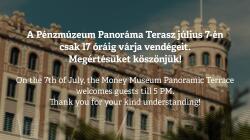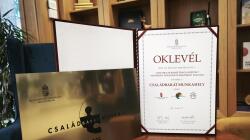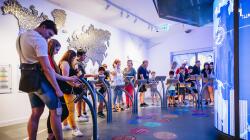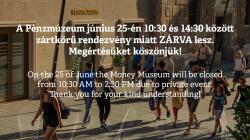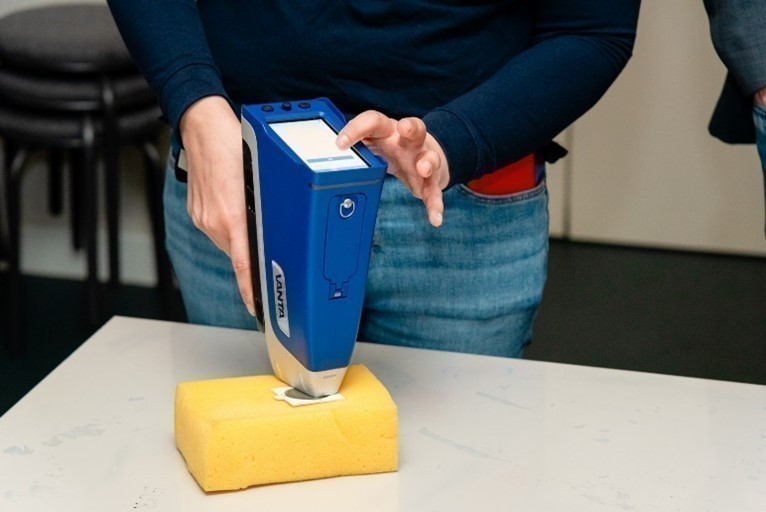
Since Archaeology Day is just around the corner, it is interesting to ask what tools the Money Museum uses to help with its numismatic excavations. XRF analytics is the most useful tool for investigating coins, and we will tell you why.
XRF (X-Ray Fluorescence Spectroscopy) is an analytical technique that is widely used to determine the chemical composition of different substances. The principle is that a substance is irradiated with X-rays, which cause the atoms of the substance to emit characteristic X-ray photons. These photons have a specific energy, which in fact allows a quantitative and qualitative analysis of the composition of the substance. The use of the machine is subject to authorisation, which is laid down by the National Atomic Energy Agency and the relevant legislation.
It has the advantage of being fast, non-destructive and has a wide analytical spectrum, detecting elements from sodium to plutonium. The disadvantage is that it mainly analyses the surface of the sample, so the composition of deeper layers may be hidden, and the effect of the matrix of the material on the results can sometimes make interpretation of the data difficult, especially for complex samples.
The Money Museum already has one
An essential instrument for archaeometric research and restoration work, it has been widely used abroad for many years, but it can only be found in a few places in Hungary, such as the Money Museum, the University of Fine Arts’ Laboratory, the Institute of Materials and Environmental Chemistry of the Natural Science Research Centre, and the restoration laboratory of the Museum of Fine Arts.
It is a unique tool in the field of numismatic research in Hungary, as few museums have it and the number of professionals that can use it is also very small. The nearest similar installations are in England, Italy and America. The instrument allows us to study the material composition of coins, for example to map the internal makeup of coins and the use of coins in Pannonia, whether in Celtic or Roman times. This complementary research will allow domestic numismatic research to compete with leading Western research programmes and even to enter international collaborations.
Collaboration of museums - joint projects
After the establishment of the Hungarian Money Museum and Visitor Center, an agreement was signed with the Hungarian National Museum, which indicated its intention to participate in joint projects based on XRF research. Thanks to recent discussions, several national museums have also signed similar declarations of interest, including the Laczkó Dezső Museum, the Dornyay Béla Museum and the Ferenczy Museum Centre. These collaborations will allow the Money Museum to be actively involved in archaeological and numismatic scientific work. Among the research projects planned in collaboration with partner museums, the analysis of Roman and Byzantine lead ingots, white metal coins and the Sikanch coin treasure (1438 pieces) are interesting. The use of the XRF instrument also offers a wealth of potential, providing specialists with information that they would not be able to obtain using other methods. It is therefore of the utmost importance that the use of XRF technology is increasingly widespread in museums.
Further news
All newsThank you for your kind understanding!
In 2025, we were once again awarded the Family- Friendly Workplace title.
We had another amazing weekend at the Money Museum!
Thank you for your kind understanding!
Thank you for your kind understanding!
In 2025, we were once again awarded the Family- Friendly Workplace title.
We had another amazing weekend at the Money Museum!
Thank you for your kind understanding!
